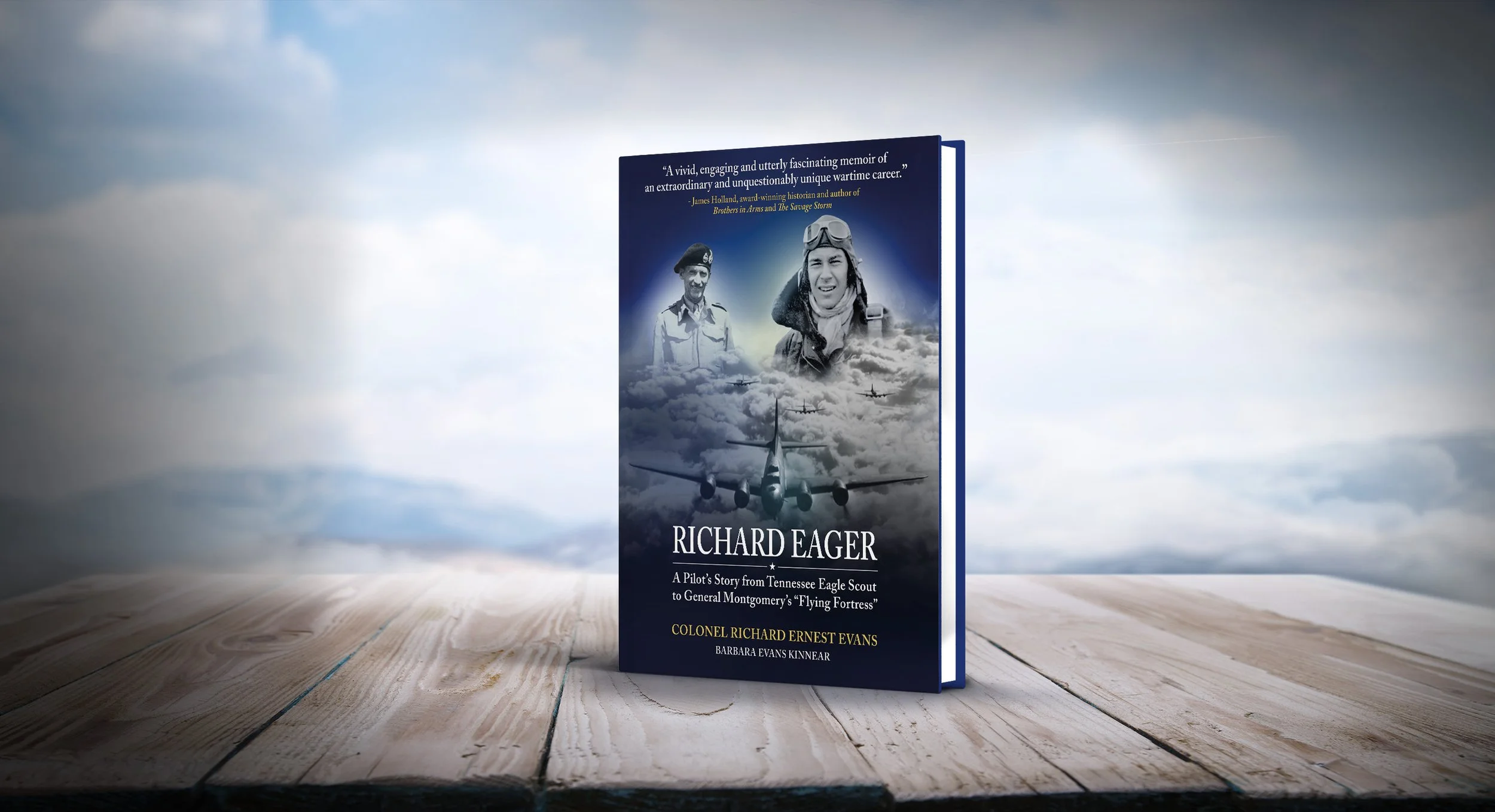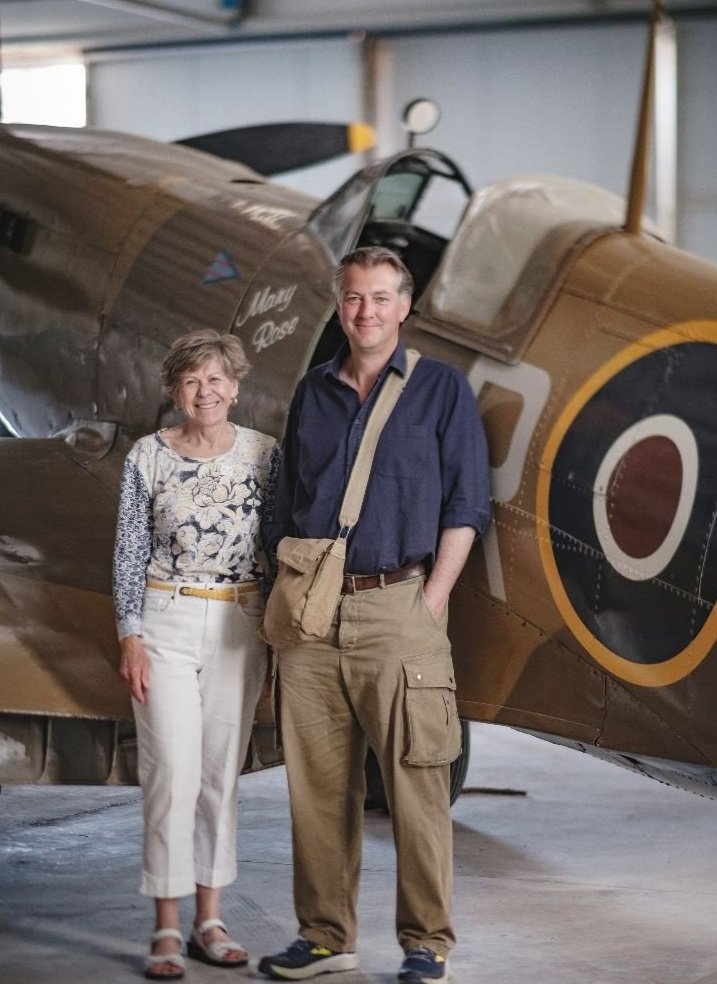Book Review by Kenneth Thomas Webb
We are honored that writer Kenneth Thomas Webb has reviewed the “Richard Eager” book. As a retired officer with the Royal Air Force Volunteer Reserve, Ken brings his unique knowledge of military and aviation history to all his writing and research.
I
THIS book, written by Colonel Evans in 1993 but not published in his lifetime, is co-authored by his daughter.
Spanning World War II, the Korean War and the Cold War, it is a valuable source reference for the casual enthusiast, the student of history and the military student alike.
As ‘Century 20’ - to use the author’s phrase - slips further into the past, Hollywood too easily steps in to inform us “how it really was”. I speak of the crews of the B-17 Flying Fortress and B-24 Liberator.
II
With over fifty combat missions flying the B-17 Flying Fortress over Germany and North Africa, then the B-29 Superfortress over Japan, the author brings to the fore the expertise and skills of every crew member.
Here is a team of ten men whose lives depend upon their pilot, but who also, each in their own nine stations, must be the eyes and ears of each other and their pilot. In battle, from their positions, they will see things that the pilot cannot see but can hear.
The extraordinary hexagon that one naturally draws between pilot - bombardier - navigator - ball-turret-gunner - tail gunner; the entire crew’s reliance upon strict intercom protocol that sweeps aside the Hollywood-type-show notion of endless quips and banter, makes this a very important work.
This hexagon draws in the gun stations at waist point and below the nose of the B-17.
III
I like to read books that give me evidence of reality.
This book gives me that in double measure, because the author penned a full glossary of terms that are highlighted in the text and easily found in the glossary at the book’s end.
IV
Here is a description of the pressure and skill of the American system of flying battle operations in boxed formations. These boxes meant that the aircraft must all fly within meters at most - and often feet only - of each other in order to give themselves maximum protection, as well as maximum defensive, and offensive, firepower to the attacking enemy squadrons.
With the end of the war, Colonel Richards was transferred to the Reserve only to be then called back to active service flying combat operations in the Korean War and then operations during the Cold War, and eventual command of the B-58 Test Squadron, United States Air Force.
V
Whilst this is a military record, the author writes from the angle of family life too. It also gives us a good outline of two controversial Generals - Montgomery and Patton - who did not see eye to eye; and the fact that the author was Monty’s pilot flying Theresa Leta gives us a fascinating insight into some of the characters that made up Allied high command, including Eisenhower, Doolittle, Bedell-Smith, LeMay and even George VI.
VI
For me, as a retired Royal Air Force (Volunteer Reserve) officer, the book is an eye-opener. With two uncles - also RAF VR - flying, and going down, in Halifaxes and Lancasters, I’ve long wanted to look at the B-17 and B-24. Thus, for me, this has been an emotive read. There are times when I felt I really was inside the aircraft. In short, this book has opened up a whole new perspective of the price paid to secure the freedom that I enjoy today.
Richard Eager sums the whole thing up well as regards flight and ground crews.
“We clearly understood and appreciated our dependency upon one another.”
— Colonel Richard Ernest Evans USAF
Now that, is this book’s hallmark.
***
Review originally published here.
About Kenneth Thomas Webb
Kenneth Thomas Webb is a writer based in Liverpool and Gloucestershire, United Kingdom. His website, kennwebb.com, showcases his work as a writer, blogger and podcaster, resting on his successive careers as a police officer, progressing to a junior lawyer in succession and trusts as a Fellow of the Institute of Legal Executives, a retired officer with the Royal Air Force Volunteer Reserve, and latterly, for three years, the owner and editor of two lifestyle magazines in Liverpool.
Kenneth Thomas Webb is named after two uncles whom he never met, including Ken Webb who was killed-in-action over Germany in 1943. He has written extensively about his family history in his Windsor Street Days blogs and also about the Royal Air Force (RAF) on his second website Eyes To The Skies.










Barbara (“Bobbie”) Evans Kinnear, daughter of Colonel Richard Ernest Evans, joins historian and author, James Holland, on his podcast, “We Have Ways of Making You Talk”